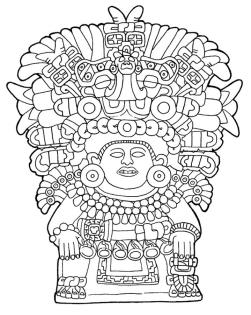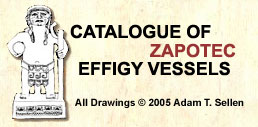| Key: MDO 33 | | Actual Location: Dolores Olmedo Museum, Mexico City, Mexico (exhibited). | | Collection: Fernando Sologuren; Armilia Van Rijn (195?-1964); Dolores Olmedo Patiño (presently). | | Registration: Record from the National Anthropology and History Institute (INAH), P.F. 100, LO 33 | | Provenance: Etla, Oaxaca, according to an undated foto by Rickards. | | Measurements: 63 x 48.5 cm. | | Color: Dark grey clay | | Chronology: MA IIIA (Boos 1966b: 390); Pitao 350 - 500 AD | | Click to view Chronology | | Reference: Photo from Rickards, circa 1911 (document by Jorge Rickards); Caso and Bernal 1952: 209, fig. 346; Boos 1966b: 390, fig. 360a and b; Anton and Dockstader 1969: 45. | | Comments: This piece was probably found by Fernando Sologuren at the beginning of the last century. In 1928, Caso and Bernal (1952: 97) took pictures of the piece when it was at Mercedes Sologuren's house. At the beginning of the 1950s, the piece went to Machilda Armilia Van Rijn and then, in 1964, it was acquired by Dolores Olmedo Patiño (personal communication with Patricia Van Rijn, 1999). For a similar Etla style of this period compare it with MDO 32 and MFR 12619. | | Glyphs: Glyph E "Xoo" reproduced several times in the headdress. The headdress mask corresponds to glyph U. Above the mask's nose, a jaguar's head can be seen and, above it, the glyph for corn. | |
| | 
Click to view high resolution in a new window
select this image for review |
